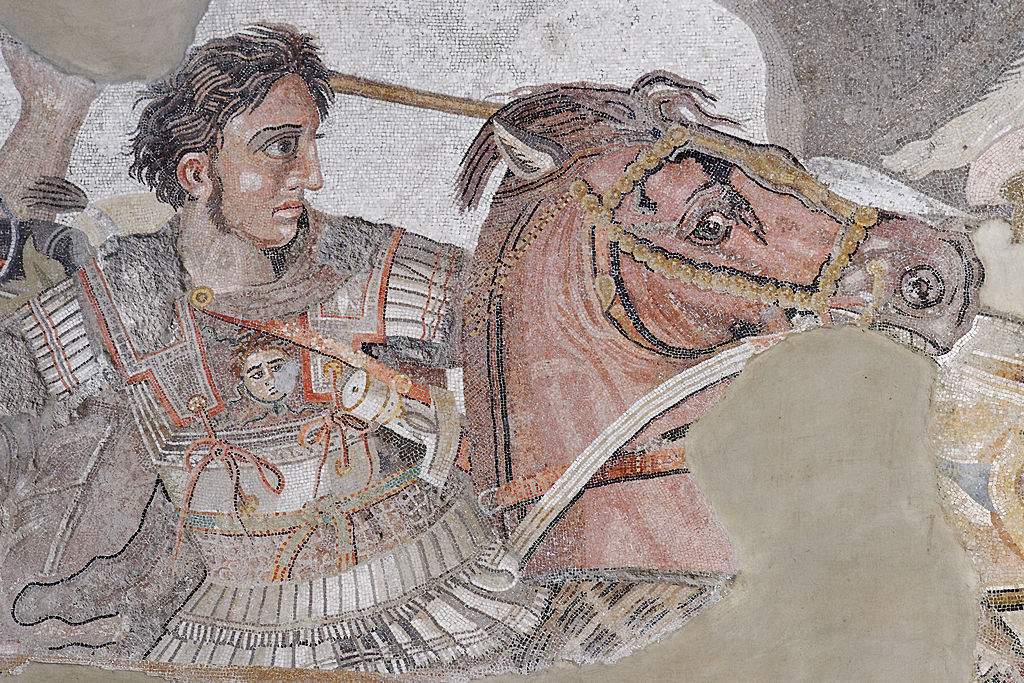MANN, new technologies and avatars to tell the story of Alexander's mosaic and the Battle of Issus
The first phase of the restoration of the Alexander Mosaic depicting the famous Battle of Issus has been completed, and thanks to a 3-D system with augmented content and the use of videomapping, the latter is now being narrated in the National Archaeological Museum of Naples with the help of new technologies: a total of four multimedia contents, including three videos and a hologram.
“The MANN is increasingly digital and accessible thanks to this valuable project that accompanies the historic restoration of the Alexander mosaic, accompanying us in a new fruition of the mosaics section,” said MANN director Paolo Giulierini. “Great scientific care, new languages and technologies, and attention to inclusion are the guidelines of these projects, about twenty of them, which, starting with the museum’s wifi coverage in 2017, bring augmented reality to the museum today, with the Macedonian narrating his exploits in hologram. And more surprises await us.”
Concept, texts and scientific coordination of the project are by MANN Educational Services - Lucia Emilio with Elisa Napolitano, Angela Rita Vocciante and Annamaria Di Noia, while the realization has been entrusted to Protom Group SpA: the goal of the Accessible Museum intervention program, coordinated by Professor Ludovico Solima of the University of Campania “Luigi Vanvitelli,” is the inclusion of different types of visitors, with particular attention to the hearing-impaired.
"MANN is moving toward the completion of the program The Accessible Museum, for which I was the scientific coordinator, with the presentation of this project, which adopts an innovative way of narrating the Alexander Mosaic,“ added prof. Solima, ”together with the three films, which describe the locations, techniques and journey of the work from Pompeii to the Mann, a hologram has in fact been developed by Protom that shows Alexander describing the salient moments of the Battle of Issus, with facial animations and lip movements that give this three-dimensional depiction a significant expressiveness. With this project, the MANN confirms its propensity for innovation, experimenting with innovative languages and technologies that can further improve its accessibility to the different audiences to whom the Museum is addressed."
Three videos can be seen in the multimedia exhibit: “Alexander’s Mosaic” tells not only the context in which the work was created, in the House of the Faun in Pompeii, but also the function the masterpiece had within the domus and the specificity of the subject represented. From a technical point of view, the modeling and coloring activity of the House of the Faun was of particular interest, which was followed by the animation of the mosaic itself; “The Techniques of the Mosaic” describes, through the production of representative virtual models of the section of a mosaic from the Roman period, the practice of making the masterpiece in detail, as defined by the sources and highlighted by archaeological research; “The Journey of the Great Mosaic” finally traces the main historical stages that led to the detachment of the masterpiece from Pompeii and its subsequent arrival at the museum.
Also of interest was theinvestigation of archival documents (first half of the 19th century) and photographs (first decades of the 20th century). Digital composing (VFX) technology allows parts of the text on the scans of the historical documents to be highlighted and the photographs to be animated. All videos are complete with subtitles, which were specially developed for a deaf audience; Luigi Spina and Giorgio Albano provided some images of the short films. A fourth piece of content was then made, representing the Battle of Isso between history and legend: tracing the tiles, a virtual model of the deployments was made, formed by hundreds of warriors of the two factions in a surreal scenario. With a circular bird’s-eye movement, the center of the scene is reached: the exchange of glances between Alexander and his enemy is visible; in the background, all the characters, men and animals, are depicted as simple silhouettes.
The animation includes a soundtrack, with the narration of the Battle of Issus written by the museum director: this narration is complemented by an avatar, depicting Alexander himself, placed in a digital holographic frame with a light-field system that can offer a wide range of stereoscopic perception without the need for glasses or special viewers.
Pictured is a detail of the mosaic
 |
| MANN, new technologies and avatars to tell the story of Alexander's mosaic and the Battle of Issus |
Warning: the translation into English of the original Italian article was created using automatic tools. We undertake to review all articles, but we do not guarantee the total absence of inaccuracies in the translation due to the program. You can find the original by clicking on the ITA button. If you find any mistake,please contact us.





























